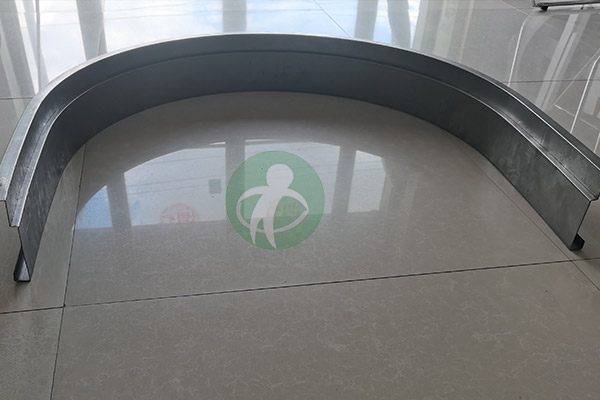Redefining the construction industry with innovative solutions, cuttin-edge technology and sustainable practices
Profile Bending 2025-06-27
Bending processing, especially for curved arcs, is a crucial operation in various manufacturing sectors, including aerospace, automotive, and construction. Achieving high accuracy in bending curvilinear shapes is vital for ensuring the structural integrity and aesthetic quality of the final product.
1. Understanding Bending Accuracy
Bending accuracy is defined by the precision with which a material is bent to the desired angle and curvature. Factors affecting bending accuracy include material properties, tooling design, machine calibration, and operator skill. Inaccuracies can lead to defects, increased scrap rates, and rework, significantly impacting production efficiency and costs.
2. Material Selection and Preparation
Choosing the right material is the first step toward improving bending accuracy. Different materials exhibit varying levels of ductility, tensile strength, and yield strength, which affect their behavior during bending.
-Ductility: Materials with higher ductility tend to deform more uniformly, making them easier to bend without cracking. Metals like aluminum and certain alloys are often preferred for bending applications.
-Preparation: Properly preparing the material before bending—such as cleaning, stress-relieving, and ensuring uniform thickness—can prevent defects and improve accuracy. Using pre-treated materials can lead to better performance during bending.
3. Advanced Tooling Design
The design of bending tools plays a significant role in achieving accurate bends.
-Die Design: Custom-designed dies that match the specific curvature required can ensure better material flow and reduce localized stresses. The use of segmented dies allows for greater flexibility in producing complex shapes.
-Roller Dies: For larger arcs, roller dies can be utilized. These dies provide continuous support, reducing the likelihood of distortion during the bending process.
-Pressure Control: Implementing hydraulic or pneumatic systems that allow for precise control of the bending pressure can help achieve consistent results. Proper pressure settings minimize the risk of over-bending or under-bending.

4. Machine Calibration and Maintenance
Regular calibration and maintenance of bending machines are essential for maintaining accuracy.
-Calibration: Bending machines should be calibrated regularly to ensure that they are producing the desired angles and curvatures. This includes checking the alignment of the bending axis and verifying the angle settings.
-Maintenance: Routine maintenance helps prevent issues such as wear and tear on components, which can lead to inaccuracies. Components such as the bending arm, clamps, and hydraulic systems should be inspected and serviced regularly.
5. Implementation of CNC Technology
Computer Numerical Control (CNC) technology has revolutionized the bending process, enabling higher precision and repeatability.
-CNC Benders: These machines can be programmed to execute complex bending sequences with high accuracy. They allow for adjustments in real time, accommodating variations in material properties and ensuring consistent results.
-Simulation Software: Utilizing advanced software for simulating the bending process can help identify potential issues before actual production. This allows for adjustments to be made in the design phase, reducing the likelihood of errors during manufacturing.
6. Real-time Monitoring and Feedback Systems
Incorporating real-time monitoring systems can significantly enhance bending accuracy.
-Sensors and Feedback Loops: Installing sensors that monitor parameters such as bending angle, pressure, and force can provide immediate feedback. This data can be used to make real-time adjustments, ensuring that the bending process remains within specified tolerances.
-Quality Control Systems: Implementing automated quality control systems that check the dimensional accuracy of bent components can help identify defects early in the process, allowing for corrective actions to be taken promptly.
7. Operator Training and Skill Development
The skill level of operators directly impacts the accuracy of bending operations.
-Training Programs: Investing in comprehensive training programs for operators can enhance their understanding of material behavior, machine operation, and quality standards. Skilled operators are better equipped to make adjustments and troubleshoot issues during production.
-Best Practices: Encouraging the adoption of best practices, such as proper setup and alignment of materials, can lead to significant improvements in bending accuracy.
Improving the bending processing accuracy of curved arcs involves a multifaceted approach that integrates material selection, tooling design, machine calibration, advanced technologies, real-time monitoring, and skilled operators. By adopting these techniques and methods, manufacturers can enhance the quality of their products, reduce waste, and improve overall efficiency in their production processes. As technology continues to evolve, staying abreast of advancements in bending techniques will be essential for maintaining a competitive edge in the manufacturing landscape.